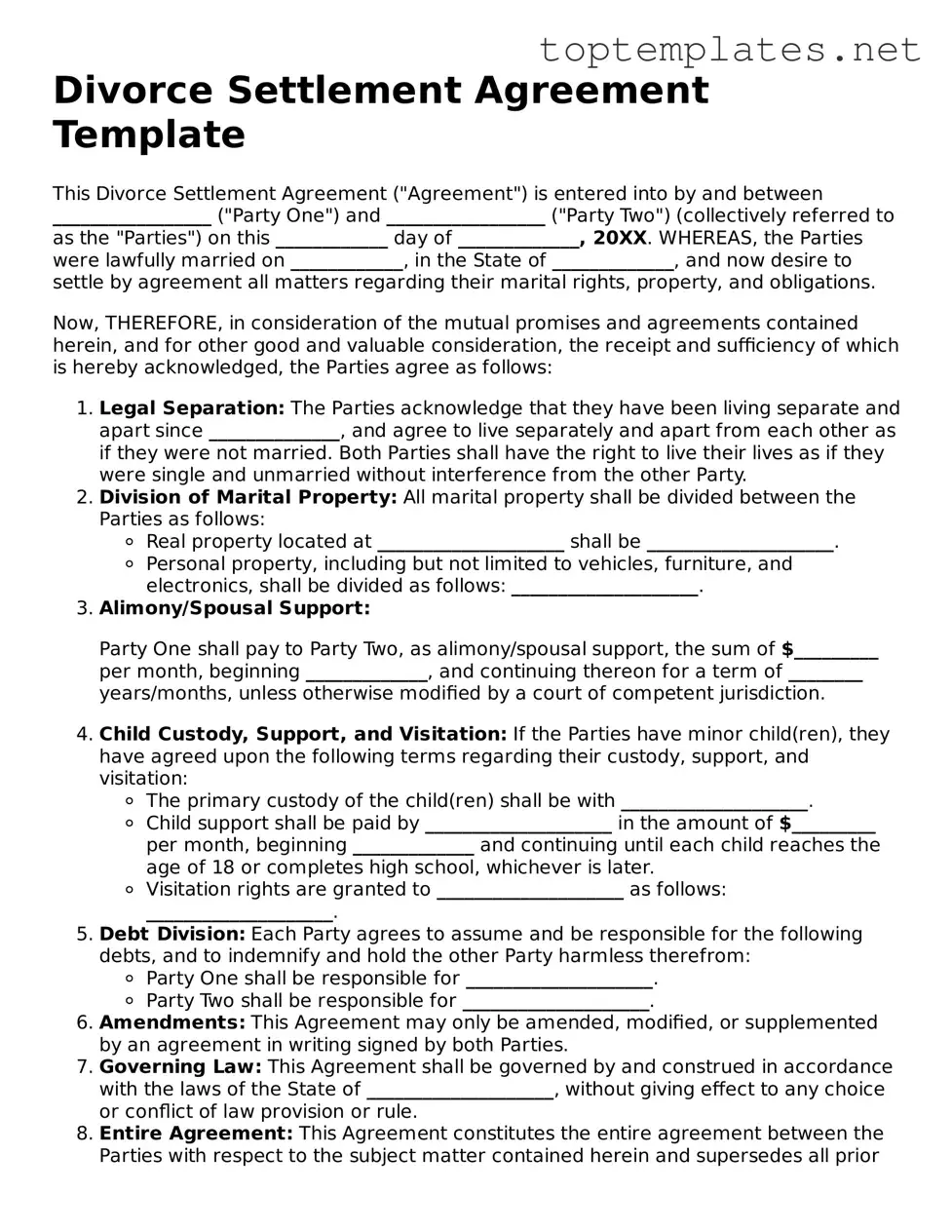What is a Divorce Settlement Agreement?
A Divorce Settlement Agreement is a legal document that outlines the terms of a divorce between two parties. It covers various aspects of the separation, including the division of assets, alimony, child support, and custody arrangements. This agreement is crucial for ensuring a clear, fair, and mutually agreed-upon conclusion to a marriage, aiming to avoid future disputes and legal battles.
How do you create a Divorce Settlement Agreement?
Creating a Divorce Settlement Agreement involves negotiation between both parties, often with the help of legal representatives. Initially, each party should clearly state their desires and expectations regarding the settlement. Information about all assets, debts, income, and expenses should be disclosed fully. Negotiations proceed until an agreement is reached on all points. Once finalized, the agreement must be written clearly, reviewed by both parties, and then signed, usually in the presence of a notary or witnesses, to become legally binding.
What should be included in a Divorce Settlement Agreement?
The agreement should comprehensively cover all relevant aspects of the divorce. This includes dividing all marital property (assets and debts), determining alimony or spousal support, detailing child support obligations, and setting out custody arrangements and visitation schedules. It should also include how any future disputes will be resolved and specify any state-specific requirements. Ensuring clarity and specificity in the agreement can prevent misunderstandings and disputes in the future.
Is a Divorce Settlement Agreement legally binding?
Yes, once signed, a Divorce Settlement Agreement is a legally binding contract between the two parties. If one party fails to follow the terms agreed upon, the other party can take legal action to enforce the agreement. However, before it becomes enforceable, the agreement often must be submitted to a court for approval during the divorce proceedings. The court will review the agreement to ensure it is fair and in compliance with state laws before incorporating it into the final divorce decree.
Can a Divorce Settlement Agreement be changed?
After it is signed and approved by a court, changing a Divorce Settlement Agreement becomes more challenging but is not impossible. Modifications can be made if both parties agree to the changes and these modifications are documented, signed, and submitted to the court for approval. In cases where the parties do not agree, one party can request a modification from the court, which must be based on significant changes in circumstances since the agreement was made, such as changes in income, employment, or the needs of children involved.
Do I need a lawyer to create a Divorce Settlement Agreement?
While it is possible to create and finalize a Divorce Settlement Agreement without a lawyer, it is highly advisable to seek legal advice. A lawyer can ensure that your rights are protected, that the agreement complies with state laws, and that it addresses all necessary aspects of the divorce comprehensively. Legal guidance is especially important if the divorce involves complex financial matters, disputes about children, or significant assets. A lawyer can also help negotiate terms, provide clarity, and ensure the agreement is fair and in your best interest.
